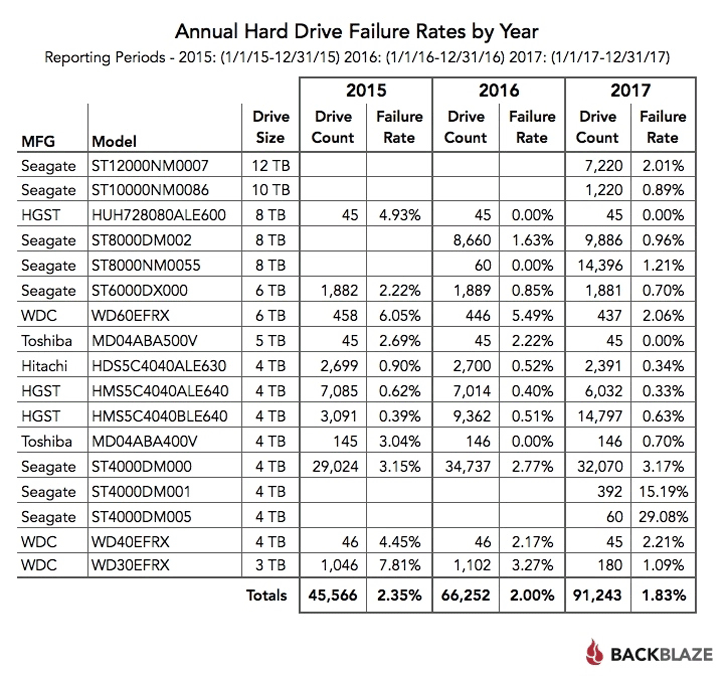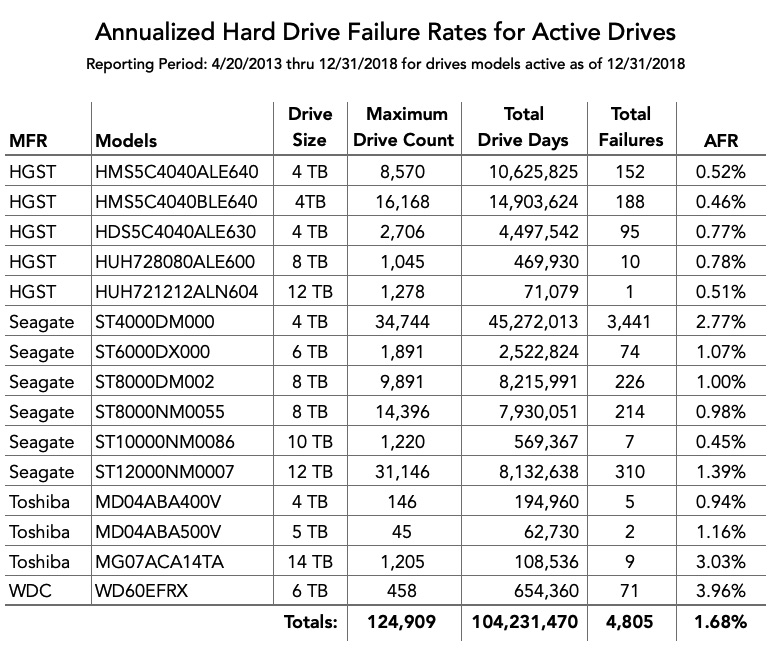
While Seagate has reduced their failure rate over 50% during that time, the upward trend over the last three quarters requires some consideration. Over the last three years, the trend for both Seagate and HGST annualized failure rates had improved, i.e. To that end the chart below uses quarterly data from Seagate and HGST drives while leaving out Toshiba and WDC drives as we don't have enough drives from those manufacturers over the course of the last three years. Still, you need to have enough data (drive count and drive days) in each observed period (quarter) to make any analysis valid. We noted in previous reports that using the quarterly reports is useful in spotting trends about a particular drive or even a manufacturer. That's as high as the quarterly rate has been since Q4 2017 and its part of an overall upward trend we've seen in the quarterly failure rates over the last few quarters. The Annualized Failure Rate (AFR) for Q1 is 1.56%. Beginning next quarter that threshold will change we'll get to that shortly. The use of 45 drives is historical in nature as that was the number of drives in our original Storage Pods. We use 45 drives of the same model as the minimum number when we report quarterly, yearly, and lifetime drive statistics. There were 195 drives (104,325 minus 104,130) that were not included in the list above because they were used as testing drives or we did not have at least 45 of a given drive model.

Neither has a large enough number of drive days to be statistically significant, but in the case of the 5 TB model, you have to go back to Q2 2016 to find the last drive failure we had of that model. The two drives listed with zero failures in Q1 were the 4 TB and 5 TB Toshiba models. If a drive model has a failure rate of 0%, it means there were no drive failures of that model during Q1 2019.


The table below covers what happened in Q1 2019. For our evaluation we remove from consideration those drives that were used for testing purposes and those drive models for which we did not have at least 45 drives (see why below). This review looks at the Q1 2019 and lifetime hard drive failure rates of the data drive models currently in operation in our data centers and provides a handful of insights and observations along the way.Īt the end of Q1 2019, Backblaze was using 104,325 hard drives to store data. Of that number, there were 1,913 boot drives and 104,325 data drives. As of March 31, 2019, Backblaze had 106,238 spinning hard drives in our cloud storage ecosystem spread across three data centers.


 0 kommentar(er)
0 kommentar(er)
